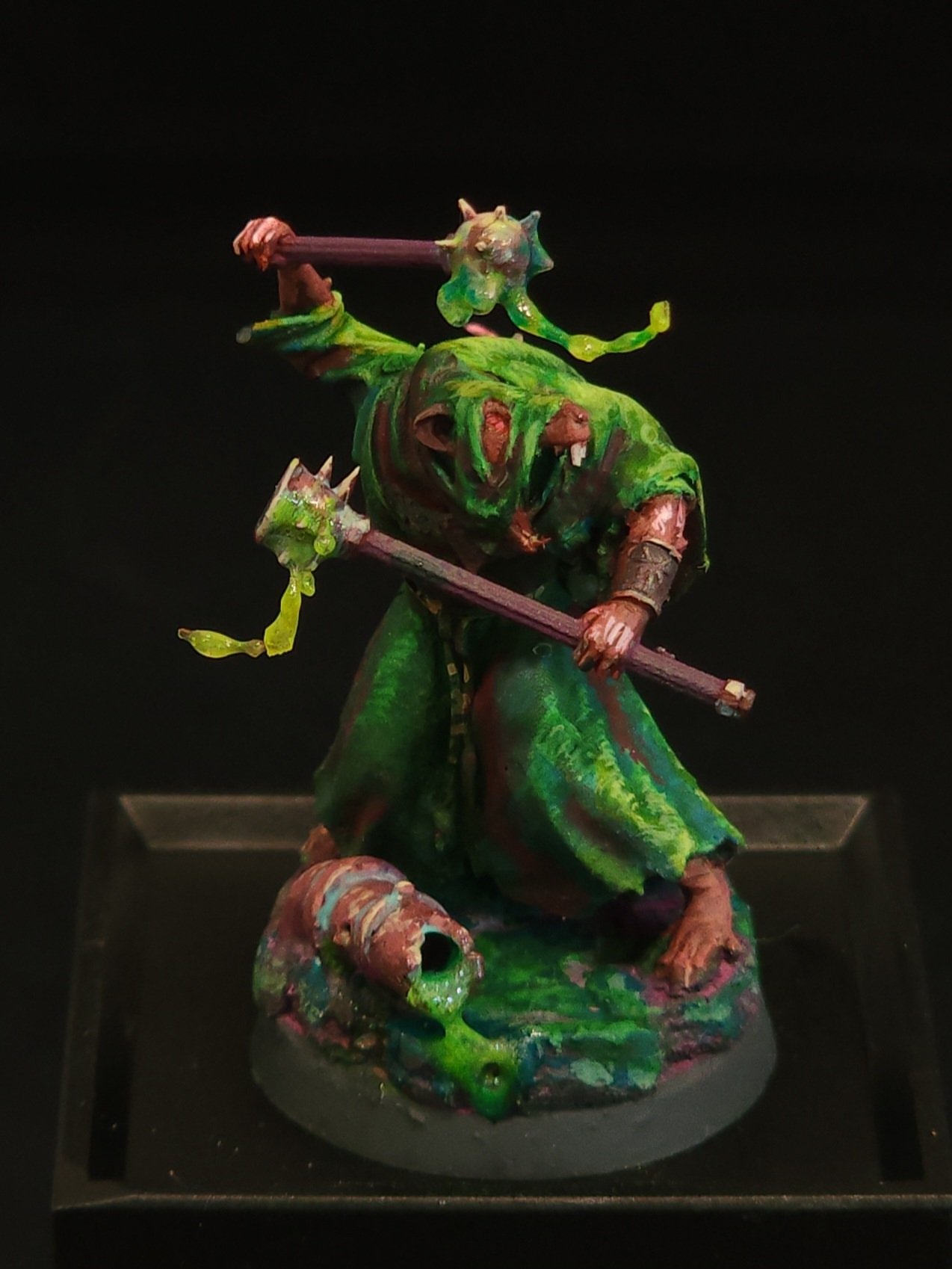this post was submitted on 27 Oct 2024
77 points (100.0% liked)
Tabletop Miniatures
2206 readers
1 users here now
From D&D to Warhammer and beyond, and including printing, painting and everything else - this is a place to discuss and share everything about tabletop miniatures and terrain.
Stand out threads:
Friends of TabletopMinis:
-
https://ttrpg.network/communities (an instance dedicated to TTRPGs)
founded 1 year ago
MODERATORS
you are viewing a single comment's thread
view the rest of the comments
view the rest of the comments

The slime is made from modge podge dimensional magic with some inks over the top.
Brilliant.
I watched a video the other day on using inks and it has me intrigued. I've pretty much only used Army Painter acrylics for applying color; what's been your experience / work flow with ink? Do you tend to use an acrylic medium or just brush directly on to the model?
Inks tend to be quite strong so I usually dillute them heavily with water before applying thin glazes. They do work with mediums, but I don't tend to use them.
I see. "Glaze" is a term I see used a lot but have not done a lot of research on what it actually means or how to use them.
The video I watched (from State of Play, if youve seen him at all) was on mixing a host of colors from 5 base inks, I've been thinking about snagging those 5 inks to play around with. Perhaps now is the time to look into glazing as well.
Thanks as always for your advice.
I haven't seen state of play, but mixing colors/color theory can be quite fun!
Inks can be fiddly, but they can produce great results. They're more prone to tearing or reactivating and wearing away than normal acrylics so you have to be gentle with them after applying.
Also, you can glaze with most any acrylic paints in addition to inks. Some colors have more transparent pigments in them and will work better than others but the technique can still be used.